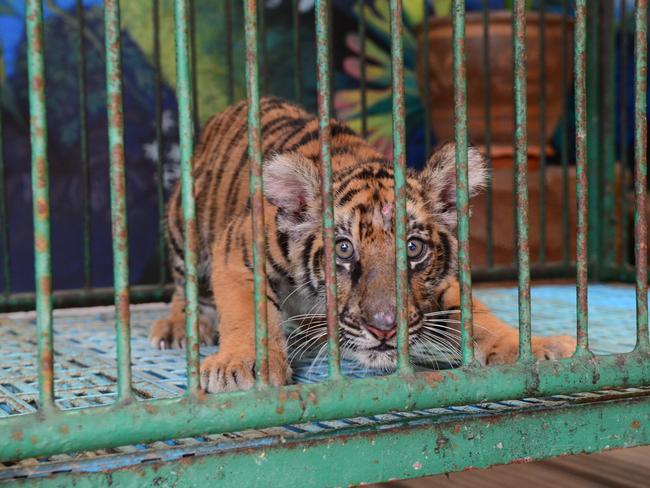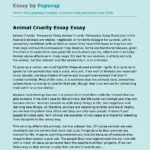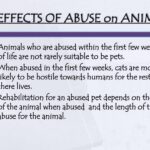Zoos have long been a staple of modern society, institutions where people can marvel at animals from far-flung corners of the globe. Yet, as we engage with these fascinating creatures, one pressing question looms: is there animal cruelty in zoos? The truth behind enclosures is often complex and layered, requiring a thoughtful exploration of their impact on wildlife. As we peel back the layers of this multifaceted issue, we can often find ourselves confronting uncomfortable realities.
The allure of a zoo lies not merely in the spectacle of exotic animals; it lies in the anticipation of witnessing nature in forms that seem nearly unattainable. Children giggle at playful otters and wide-eyed adults gaze at majestic tigers. However, beneath the surface of this charming facade, a darker narrative unfolds. Reports of mistreatment, inadequate living conditions, and the psychological distress of captive animals paint a contrasting picture. The juxtaposition of wonder and sorrow challenges our perceptions and leads to broader inquiries about the ethics surrounding animal captivity.
One of the most stark indicators of potential cruelty in zoos is the physical environment provided for the animals. Many species thrive in expansive, dynamic habitats that mimic their natural ecosystems. In contrast, the enclosures of certain facilities can resemble barren prisons, devoid of stimulation and complexity. For mammals such as elephants and tigers, confined spaces can lead to conditions like zoochosis, a psychological malaise characterized by repetitive, obsessive behaviors. This discord raises the critical question: are zoos prioritizing entertainment over the welfare of the animals?
As we shift our focus to the behavioral aspects, the signs of distress in captive animals become even more pronounced. The rhythmic pacing of a lion in its enclosure or the incessant head-bobbing of a captive parrot often serve as red flags for observers. These behaviors indicate a deep-rooted anguish, suggesting that animals are struggling to adapt to an environment that starkly contrasts their natural habitat. This raises an important ethical dilemma: should we, as a society, endorse such institutions that compromise the well-being of creatures in the name of education and entertainment?
The arguments in favor of zoos often highlight the roles they play in conservation and education. Indeed, many reputable facilities engage in breeding programs aimed at reintroducing endangered species into their natural habitats. Additionally, educational efforts can foster a better understanding of wildlife conservation in the general public. However, these benefits do not negate the potential for cruelty inherent in captivity. It becomes imperative to scrutinize how effective these programs are and whether they genuinely contribute to the preservation of species, or merely serve as a convenient justification for continued animal confinement.
Interestingly, the advent of modern technology presents us with an alternative to conventional zoos. Virtual reality experiences and wildlife documentaries can deliver unparalleled glimpses of animal behavior in their natural settings, often imparting a profound appreciation for conservation efforts. Wouldn’t it be more ethical to invest resources into these technology-driven alternatives? This question opens a dialogue about the future of human-animal interaction, one that could potentially eliminate the need for zoos altogether.
The proliferation of animal rights activism has also underscored the necessity for reassessing the role of zoos. Grassroots movements and global organizations tirelessly advocate for the rights of animals, challenging the status quo. These activists emphasize the recognition of animals as sentient beings deserving of dignity and respect. Their efforts have led to increased scrutiny of zoos worldwide; instances of neglect and abuse are met with outrage, and many facilities have faced public backlash, forcing them to address their shortcomings. Ultimately, the relentless pursuit of justice for these creatures challenges us to reconsider our relationship with the animal kingdom.
As individuals, we wield significant power collectively. Patronage of zoos, including the financial support generated through ticket sales, can foster change by promoting a more ethical approach to animal care. By demanding transparency and advocating for higher standards, we lay the groundwork to ensure that animal welfare becomes a priority rather than an afterthought. Our voices can inspire a metamorphosis in how zoos function, steering them toward sanctuaries that prioritize rehabilitation, rather than confinement.
Nevertheless, it is crucial to acknowledge that not all zoos operate under the same principles. Some establishments are committed to providing enriching environments that closely approximate the natural habitats of the animals they house. These exemplary organizations strive to educate the public about wildlife conservation while ensuring the highest standards of care are met. Highlighting the disparity between these facilities and those that exhibit clear signs of animal cruelty emphasizes the need for continued advocacy and critical evaluation of standards across the board.
In conclusion, the discourse surrounding animal cruelty in zoos necessitates a meticulous examination of multiple facets of animal care, conservation, and human interaction. As we shine a light on the perceived grandeur of these establishments, we must confront the uncomfortable truths that often lie beneath. While modern zoos can serve educational and conservationist purposes, they are not immune to criticism regarding the welfare of their inhabitants. It is our responsibility to remain vigilant, to ask difficult questions, and to engage with the ethical implications of animal captivity in a world becoming increasingly aware of the rights of all sentient beings. Ultimately, choosing empathy and advocacy is a step toward dismantling the architecture of animal cruelty, tailoring a future where respect and coexistence define the human-animal relationship.









